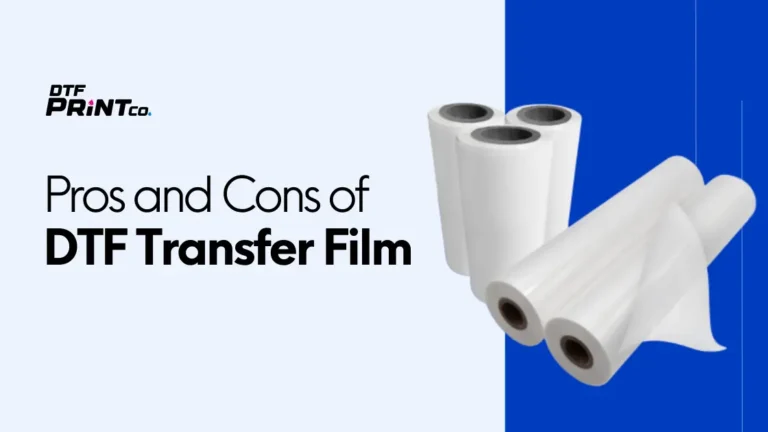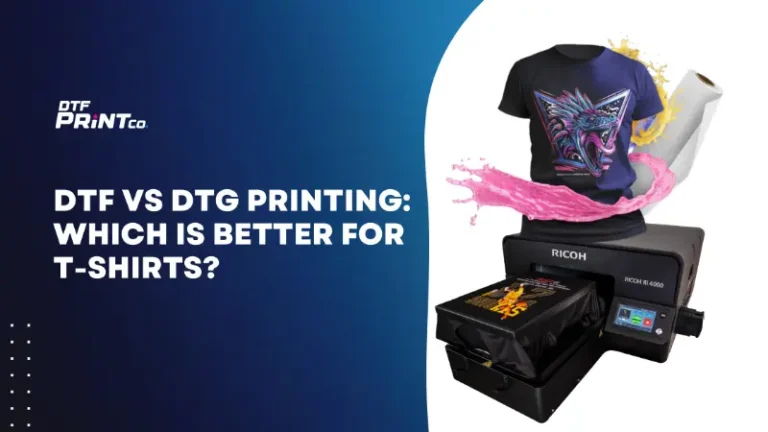
Pros and Cons of DTF Transfer Film: Should You Use It in 2025?
DTF transfer film offers vibrant, durable prints on multiple fabric types with fewer setup costs than screen printing. It’s ideal for small batches and complex

Direct-to-Film (DTF) printing has taken the custom apparel world by storm, offering vibrant designs, durability, and versatility. Whether you’re a seasoned pro or just starting out, mastering the art of DTF printing requires a mix of technical know-how and creative finesse. To help you navigate this exciting medium, we’ve compiled the ultimate list of do’s and don’ts. Let’s get into it.
Before we dive into the tips, let’s quickly break down what DTF printing is. Unlike traditional methods like screen printing or heat transfer vinyl, DTF printing involves printing designs onto a special film, which is then transferred onto fabric using heat and pressure. The result? Crisp, colorful designs that stick to a wide range of materials, from cotton to polyester.
Your DTF printer is the backbone of your operation. Opt for a reliable machine like the Brother GTX Pro or the Epson SureColor F2100, which are known for their precision and durability. Skimping on equipment can lead to inconsistent prints and costly repairs.
Not all DTF inks and films are created equal. Stick to trusted brands like Triangle Inks or Jetbest for vibrant, long-lasting results. Low-quality materials can lead to fading, cracking, or poor adhesion.
Pre-treatment is essential for ensuring your designs adhere properly. Use a pre-treatment powder to prepare the fabric, especially for dark or synthetic materials. This step enhances color vibrancy and durability.
Always run a test print before committing to a large batch. This helps you catch any issues with alignment, color, or adhesion. Keep a swatch book of different fabrics and colors to reference during testing.
Regular maintenance is key to keeping your DTF printer in top shape. Clean the printheads, replace worn-out parts, and follow the manufacturer’s guidelines for upkeep. A well-maintained machine ensures consistent, high-quality prints.
One of the biggest advantages of DTF printing is its versatility. Don’t be afraid to play around with bold colors, gradients, and textured effects. This is your chance to stand out in a crowded market.
Curing is crucial for ensuring your designs are durable and wash-resistant. Use a heat press or conveyor dryer to cure your prints at the recommended temperature and time. Skipping this step can result in designs that peel or fade after a few washes.
Applying too much ink or powder can lead to smudging or uneven transfers. Follow the manufacturer’s guidelines for ink and powder application to achieve clean, professional results.
While DTF printing works on a wide range of fabrics, some materials may require special handling. For example, stretchy fabrics like spandex may need a lower heat setting to avoid distortion. Always check the fabric’s composition before printing.
Patience is key when transferring designs. Rushing the process can lead to misaligned prints or incomplete transfers. Take your time to ensure the film is properly aligned and pressed.
Humidity and temperature can affect the quality of your prints. Store your inks, films, and fabrics in a controlled environment to prevent issues like clumping or warping.
The world of DTF printing is constantly evolving. Stay informed about the latest trends, technologies, and techniques by following industry leaders like DTF Print Supply or joining online communities like the DTF Printing Facebook Group.
| Aspect | Do’s | Don’ts |
|---|---|---|
| Equipment | Invest in quality printers and supplies | Use outdated or unreliable machines |
| Materials | Use high-quality inks and films | Skimp on materials to cut costs |
| Fabric Preparation | Pre-treat fabrics for better adhesion | Skip pre-treatment for dark fabrics |
| Testing | Run test prints before full production | Assume all designs will print perfectly |
| Maintenance | Clean and maintain your printer regularly | Neglect routine maintenance |
| Creativity | Experiment with colors and textures | Stick to safe, generic designs |
DTF printing is a game-changer for custom apparel, offering endless possibilities for creativity and innovation. By following these do’s and don’ts, you’ll be well on your way to producing stunning, high-quality designs that stand the test of time.
Ready to take your DTF printing skills to the next level? Share your favorite tips or questions in the comments below, and don’t forget to check out our recommended resources for more insights. Happy printing!

DTF transfer film offers vibrant, durable prints on multiple fabric types with fewer setup costs than screen printing. It’s ideal for small batches and complex

Both DTF (Direct-to-Film) and DTG (Direct-to-Garment) printing are popular methods for customizing t-shirts, but each method has its strengths. DTF printing works well on various

Direct To Film (DTF) printing is rapidly becoming a popular choice for custom apparel and garment decoration. Unlike traditional screen printing or direct-to-garment (DTG) methods,

2023 - 2024 © ALL RIGHTS RESERVED